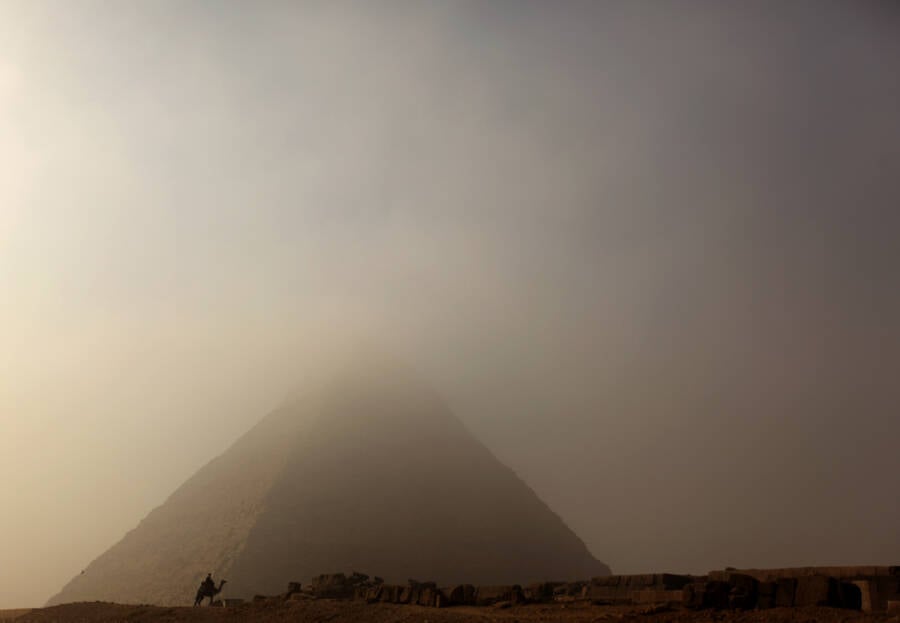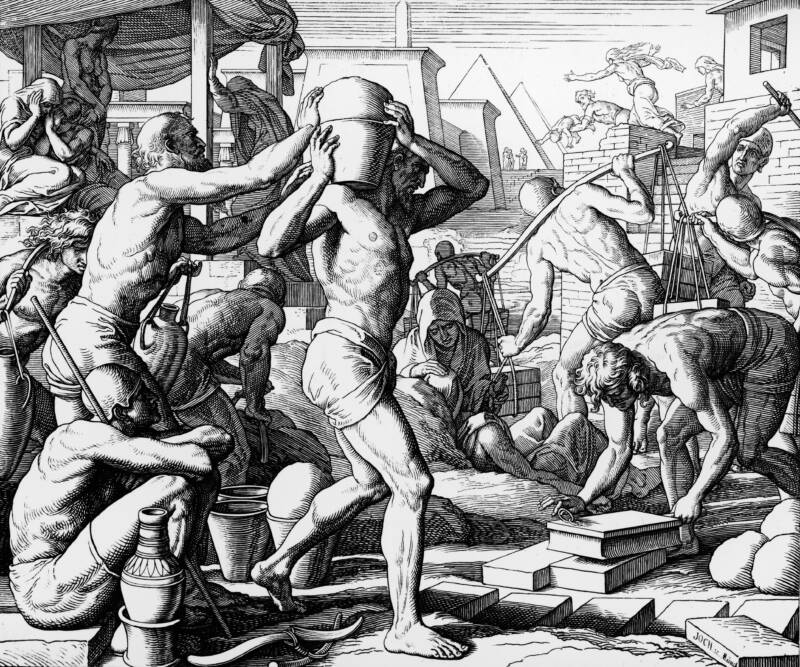How Were The Pyramids Built?

Patrick Baz/AFP via Getty ImagesThe pyramids in Giza are over 4,500 years old and remain an architectural marvel to this day.
For years, researchers and academics marveled at the construction and design of the pyramids at Giza. Created as elaborate tombs for Egyptian rulers, these monuments have also provided a wealth of information and insight into ancient Egyptian life.
But for all the questions they’ve answered, one mystery still lingers: How did the ancient Egyptians build such magnificent, complex structures?
Of course, many have tried to argue that aliens helped with the construction of the great structures, but in lieu of any concrete evidence, researchers have long searched for more tangible clues.
A large part of the problem that has perplexed researchers stems from the fact that many tools that could have made the pyramids’ construction much more feasible hadn’t been invented or discovered yet.
Yet the plans and measurements for the pyramids are accurate down to a fraction of an inch. They have stood for thousands of years, weathering desert storms and wars.
Several theories have cropped up over the years, but recent discoveries may finally help to shed some light on these ancient mysteries.

The Print Collector/Heritage Images via Getty ImagesAn 1844 diagram showing a possible construction method the ancient Egyptians may have employed to build the pyramids.
According to Fast Company, one Dutch team of researchers looked closely at Egyptian art that depicted workers moving large stones across the desert — specifically at the tiny figures shown pouring water in the stones’ paths.
This may have been an example of liquid mechanics. Water makes sand clump together, therefore reducing friction across the surface.
In theory, this would allow the ancient Egyptians to move larger stone blocks than previously believed possible. In practice, the Dutch team discovered that the theory held up when they replicated the concept.
Mark Lehner, an archaeologist who has studied the pyramids for over 30 years, put forward a second theory, as reported by the Boston Globe.
Today, the pyramids are almost entirely surrounded by dry, sandy deserts. But back during the time of their construction, Lehner said, there may have been man-made waterways that channeled the Nile’s water to the sites of the pyramids.
It’s possible, then, that ancient Egyptians were able to load these large stones onto boats to transport them. Lehner even found a potential ancient port near the pyramids that would have been where the stones were dropped off.
And then, in 2013, archaeologist Pierre Tallet found the papyrus journal of an ancient man named Merer who had been charged with transporting some of the materials to Giza.
His journal outlines the journey he and 200 crewmen took from Giza, creating waterways to divert water from the Nile to man-made canals leading to the pyramids. This allowed his team to transport several large limestone blocks.
Lehner’s excavations have also cast doubt on the popular belief that enslaved workers built the pyramids.

Kean Collection/Getty ImagesA depiction of Israelite slaves carrying stones and buckets during the pyramids’ construction.
When his team found large quantities of animal bones in the ruins of ancient builders’ homes, especially young cow bones, it implied that workers regularly ate prime beef and other prized meats from outlying farms — in other words, not meals reserved for enslaved laborers.
Lehner and other researchers now believe it more probable that skilled workers built the pyramids, likely for decent pay given how dangerous the work was.
Of course, these recent discoveries only shed light on a few ancient mysteries of the pyramids, leaving many stones still unturned.





